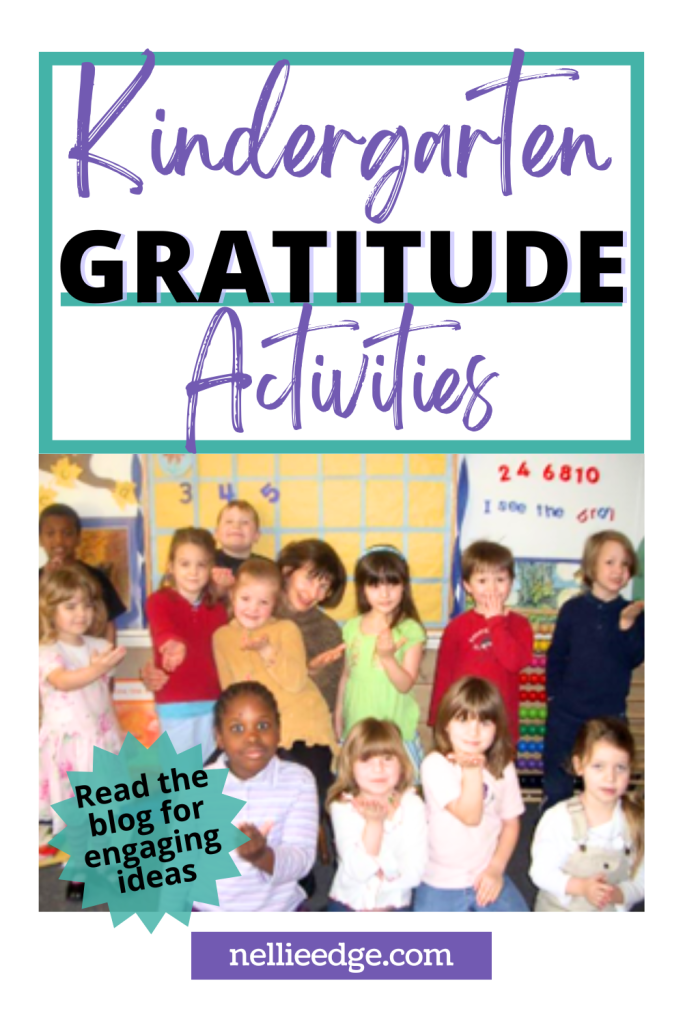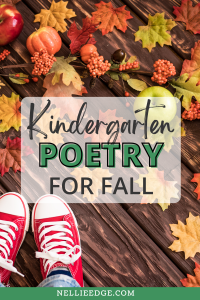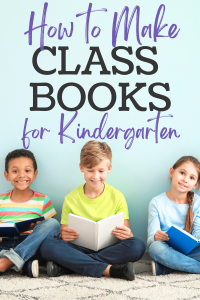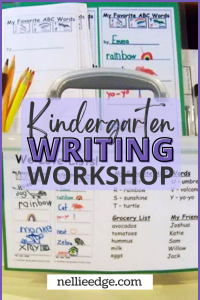Do you ever feel frustrated when you help someone in public but do not get a thank you back? For example, have you ever held a door open, and the person walked right past you without saying thank you? Unfortunately, this happens all the time. Due to how busy life is, generations have lost some politeness. However, it is essential that teachers help bring it back. Students need to learn the importance of manners and politeness. By instilling it within them at a young age, they will grow up to be kind adults. Thankfully, teaching kindness also creates a positive learning environment. So, let’s explore how the simplest way to build a happy classroom is to teach gratitude.
Year-Long Theme
Forming habits will not occur overnight. Students need repeated reminders and practice on ways to express gratitude before this feels natural. While the simplest way to build a happy classroom is to teach gratitude, it is a year-long focus. This skill builds healthy relationships and positive attitudes for life inside and outside the classroom. So, we sing, sign, spell, and write “Thank you” every chance we get. We even use the ASL ABC Chart to help build our sign language skills. Ultimately, developing social-emotional skills, such as gratitude, kindergarten kindness, and friendship, is instrumental to all other learning.
Since gratitude is a year-long theme, it is essential to model the language of appreciation each day. Some of my favorite examples include:
• Thank you for coming to school on time today! That’s called punctuality.
• Thank you for holding the door open. That’s showing kindergarten kindness!
• Thank you for listening so quietly. Everyone was able to hear.
• Thank you for pushing the chairs in – no one even asked you. You sure know how to take care of our classroom!
• Wow! Thank you for helping us clean up so quickly. That’s showing responsibility!
• Thank you for holding the door open. How considerate of you!
• Thank you for doing such a good job cleaning off the playdough table.
If we want students to say, “Good job!” and “Thanks for being my partner,” they must also hear it. So, I model ways to express gratitude and show students how to do it. Whether it is passing someone a supply or helping to push in chairs, gratitude makes a massive difference in the classroom environment.
Ways to Express Gratitude: Song and ASL
Learning to express and write “Thank you” and “You’re my friend” is crucial to building healthier school communities. Thankfully, there are many ways to teach students to express gratitude.
Signing the “Thank You” Song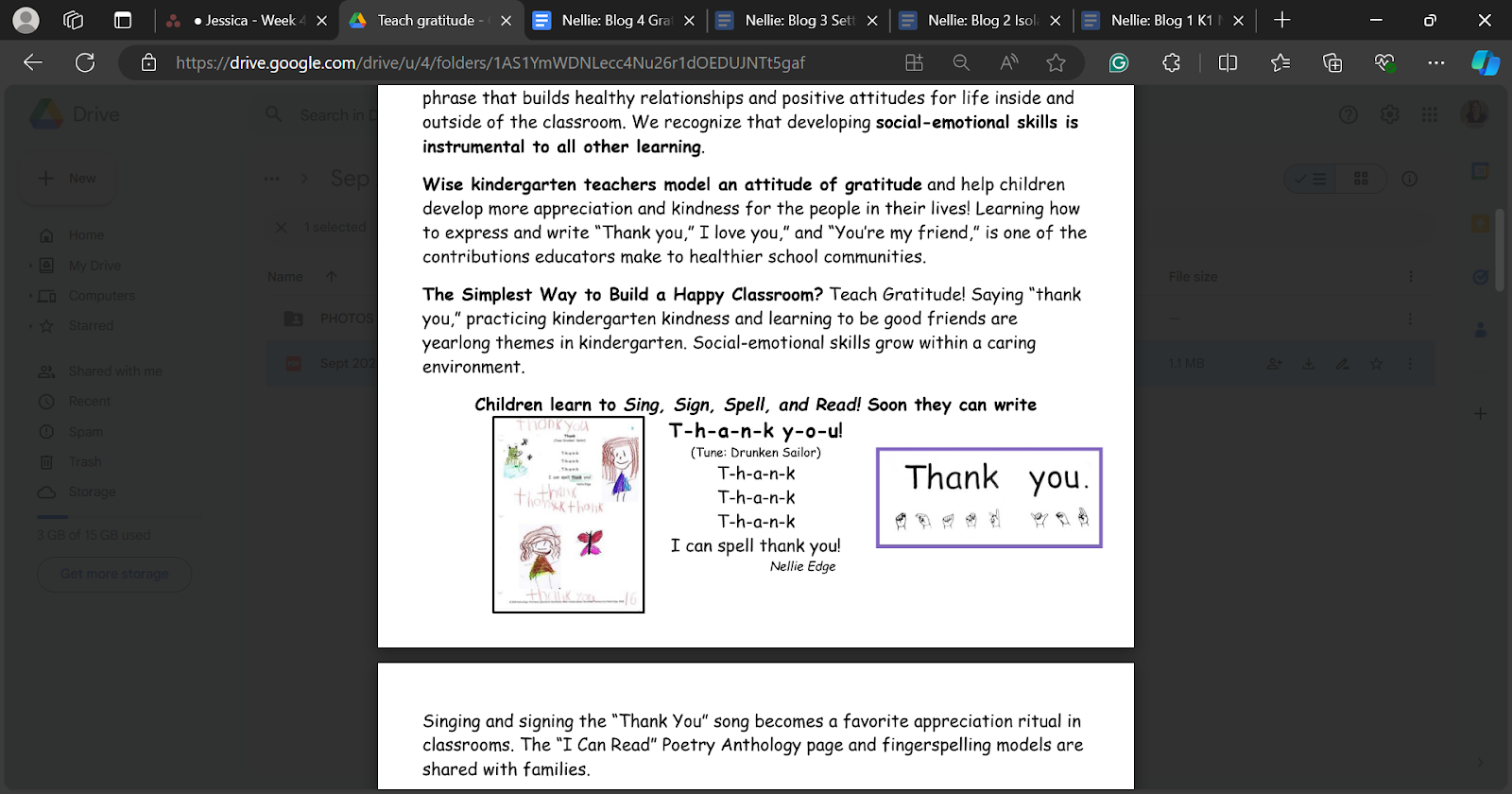
One of the simplest ways to build a happy classroom is to teach gratitude using a thank-you song. Once students learn this tune, they are eager to show their appreciation. This is perfect for thanking our volunteers, school support staff, and visitors. Anyone who stops in the classroom is always charmed to receive this musical gift of appreciation.
Using ASL to Say Thank You
It is always important to teach inclusivity and kindness to all. So, we focus on how to sign thank you. To do this, students “touch the lips with the fingertips of one or both flat hands, then move the hands forward until the palms are facing up. It is natural to smile students to use is so helpful. These include, “Thank you for being my friend” and “Thank and nod your head while making this sign.”
Creative Projects
Students love crafts! So, one of the simplest ways to build a happy classroom is to teach gratitude using them. This way, students learn an essential skill by doing something they love.
A student-favorite gratitude craft involves making thank-you notes and cards for volunteers and guests. Honestly, this is a fantastic way to combine writing and art in a happy classroom.
Students also make cards for their special friends. This is a great way to ensure friends thank each other for simply being there for them. Having a list of sentence starters for you for helping me.”
Kindergarteners also love to make notes for the principal and parents. These people make a huge difference in their lives and deserve appreciation.


After students practice writing thank you cards in the classroom, I send home card-sized sheets of paper. Students love brainstorming about who to write cards for and where to hide them. Parents love lifting up their pillows and finding a card before going to bed.
Honestly, the simplest way to build a happy classroom is to teach gratitude. If we want students to learn, they need to feel welcome and respected. Thankfully, there are tons of ways to teach gratitude all year long.





